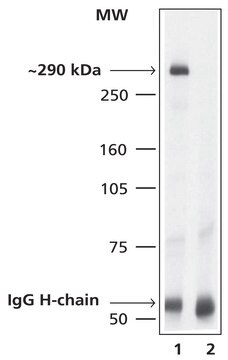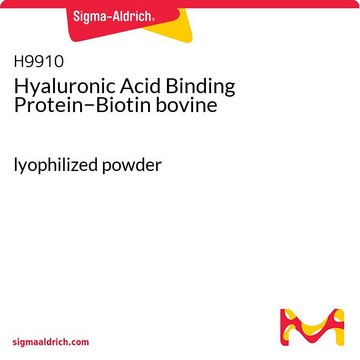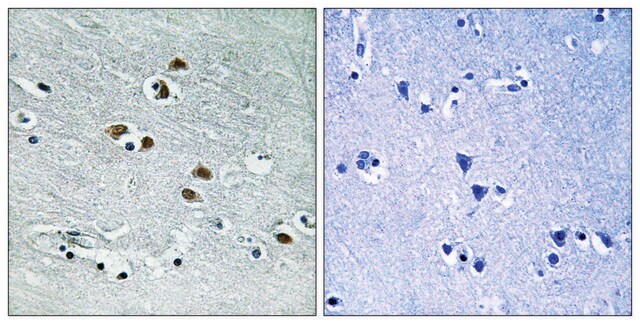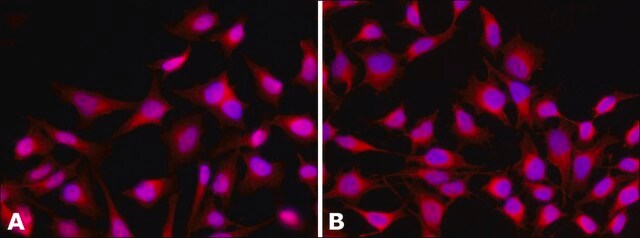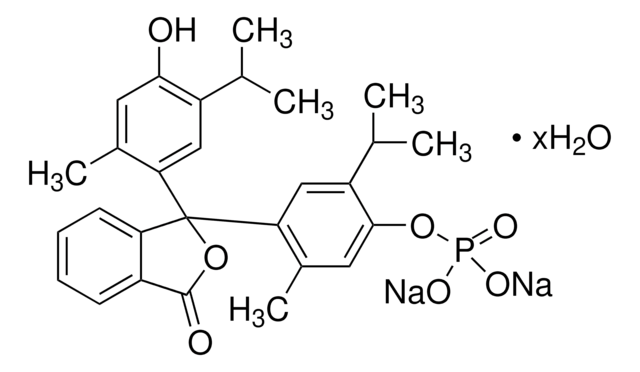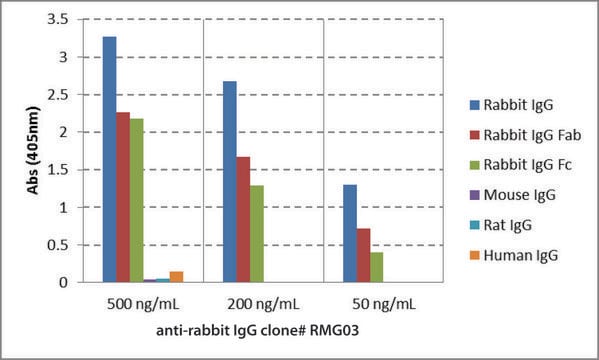推荐产品
生物源
rabbit
共軛
unconjugated
抗體表格
affinity isolated antibody
抗體產品種類
primary antibodies
無性繁殖
polyclonal
形狀
buffered aqueous solution
分子量
antigen ~140 kDa
物種活性
human, mouse, rat
加強驗證
recombinant expression
Learn more about Antibody Enhanced Validation
技術
immunoprecipitation (IP): 10-20 μg using RIPA extract of HeLa nuclei
indirect immunofluorescence: 1:250 using HEK 293T cells expressing recombinant mouse HDAC4
microarray: suitable
western blot: 1:1,000 using whole extracts of mouse NIH3T3 cells
western blot: 1:500 using whole extracts of rat brain
UniProt登錄號
運輸包裝
dry ice
儲存溫度
−20°C
目標翻譯後修改
unmodified
基因資訊
human ... HDAC4(9759)
mouse ... Hdac4(208727)
rat ... Hdac4(363287)
一般說明
Histone deacetylases (HDACs) are competing enzymes, belonging to histone deacetylase family. There are two classes of HDACs with six to seven different types of HDACs proteins. HDAC1,HDAC2 and HDAC3 belong to Class I HDACs and HDAC4, HDAC6, and HDAC7 belong to Class II HDACs. Class I HDACs consists of a single deacetylase domain at the N-termini and diversified C-terminal regions, while Class II contains a deacetylase domain at C-terminal position.
Mammalian histone deacetylases (HDACs) are classified into three classes according to sequence homology. HDAC1, HDAC2, HDAC3 and HDAC8 belong to class I HDACs and HDAC4, HDAC6, and HDAC7 belong to class II HDACs. Class III consists of the yeast sirtuins (sir2-like protein). Class I HDACs are ubiquitously expressed. Whereas, most of the class II HDACs show tissue-specific expression. The antibody is affinity-purified using the immunizing peptide immobilized on agarose.
特異性
Anti-Histone Deacetylase 4 (HDAC4), recognizes human, mouse and rat HDAC4.
免疫原
Synthetic peptide corresponding to amino acid residues of human HDAC4 with C-terminal added lysine conjugated to KLH.
應用
Applications in which this antibody has been used successfully, and the associated peer-reviewed papers, are given below:
- Western Blotting
- Immnofluorescence
- Immunoprecipitation
生化/生理作用
Histone deacetylase 4 (HDAC4) contains import and export nuclear signal that aids in nucleocytoplasmic shuttling. It has physical and functional interactions with transcription factor myocyte enhancer factor-2 (Mef2) protein and 14-3-3. This interaction disturbs nucleocytoplasmic shuttling and then guides HDAC4 to the cytoplasm and the nucleus, respectively. In addition, HDAC4 with HDAC5 and HDAC7 represses transcription by binding to the nuclear receptor co-repressors silencing mediator of retinoic acid and thyroid hormone receptors (SMRT) and nuclear receptor co-repressor (NCOR).
Studies show that HDAC4 contains a composed import and export nuclear signal that aids in nucleocytoplasmic shuttling. It has physical and functional interactions with transcription factor MEF2C and 14-3-3. This interaction results in the shuttling and it guides HDAC4 to the cytoplasm and the nucleus.The C-terminal domain of HDAC4 shows innate histone deacetylase activity. It is seen that MEF2C combines with HDAC4 at the N-terminal domain and downmodulate c-jun promoter activity.
外觀
Solution in 0.01 M phosphate buffered saline, pH 7.4, containing 1% bovine serum albumin and 15 mM sodium azide.
儲存和穩定性
For continuous use, store at 2-8°C for up to one month. For prolonged storage, freeze in working aliquots at -20°C. Repeated freezing and thawing is not recommended. Storage in frost-free freezers is also not recommended. If slight turbidity occurs upon prolonged storage, clarify the solution by centrifugation before use. Working dilutions should be discarded if not used within 12 hours.
免責聲明
Unless otherwise stated in our catalog or other company documentation accompanying the product(s), our products are intended for research use only and are not to be used for any other purpose, which includes but is not limited to, unauthorized commercial uses, in vitro diagnostic uses, ex vivo or in vivo therapeutic uses or any type of consumption or application to humans or animals.
未找到合适的产品?
试试我们的产品选型工具.
儲存類別代碼
12 - Non Combustible Liquids
水污染物質分類(WGK)
WGK 1
閃點(°F)
Not applicable
閃點(°C)
Not applicable
Hdac4 interactions in Huntington's Disease viewed through the prism of multiomics
<BIG>Federspiel JD, et al.</BIG>
Molecular and Cellular Proteomics (2019)
Joel D Federspiel et al.
Molecular & cellular proteomics : MCP, 18(8 suppl 1), S92-S113 (2019-05-02)
Huntington's disease (HD) is a monogenic disorder, driven by the expansion of a trinucleotide (CAG) repeat within the huntingtin (Htt) gene and culminating in neuronal degeneration in the brain, predominantly in the striatum and cortex. Histone deacetylase 4 (Hdac4) was
Class II and IV HDACs function as inhibitors of osteoclast differentiation
Blixt NC, et al.
PLoS ONE, 12(9), e0185441-e0185441 (2017)
Michal Mielcarek et al.
PloS one, 6(11), e27746-e27746 (2011-12-06)
Huntington's disease (HD) is a progressive neurological disorder for which there are no disease-modifying treatments. Transcriptional dysregulation is a major molecular feature of HD, which significantly contributes to disease progression. Therefore, the development of histone deacetylase (HDAC) inhibitors as therapeutics
A H Wang et al.
Molecular and cellular biology, 21(17), 5992-6005 (2001-08-04)
Nucleocytoplasmic trafficking of histone deacetylase 4 (HDAC4) plays an important role in regulating its function, and binding of 14-3-3 proteins is necessary for its cytoplasmic retention. Here, we report the identification of nuclear import and export sequences of HDAC4. While
我们的科学家团队拥有各种研究领域经验,包括生命科学、材料科学、化学合成、色谱、分析及许多其他领域.
联系技术服务部门
